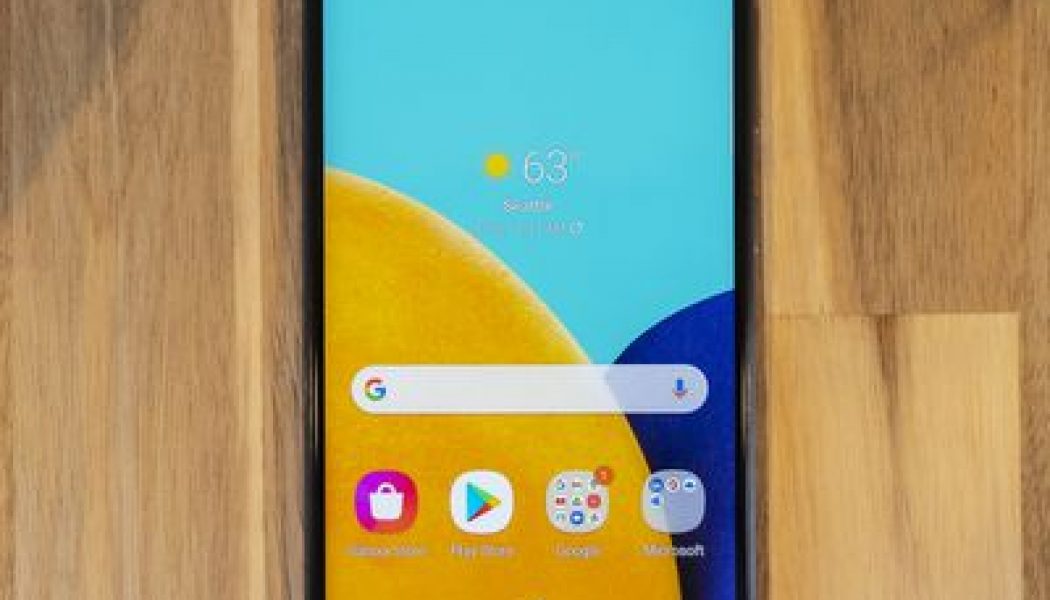If a $100 budget phone is the fast-food dollar menu and a $1,000 flagship is a steakhouse dinner, then the Samsung Galaxy A52 5G sits comfortably halfway between the two: the laid-back all-day cafe with surprisingly tasty food.
It’s good. More importantly, it’s good where it matters. Sure, you have to order your food at the counter and get your own water refills, but it’s worth it because brunch is fantastic and the prices are reasonable.
The A52 5G is the highest-specced of the budget A-series Galaxy phones we’ll see in the US this year, offering all of the basics for its $499 price tag along with a few good extras. Its 6.5-inch screen comes with a fast 120Hz refresh rate that’s scarce at this price point. Its main camera includes optical image stabilization, something I missed when I used the more expensive OnePlus 9. The A52 5G is rated IP67 waterproof for some extra peace of mind. And hey, there’s still a headphone jack! In this economy!
Still, this isn’t a flagship, and costs had to be cut somewhere. The device’s frame and back panel are plastic, and while I like the matte finish on the back, there’s a certain hollowness when you tap on it that’s not very reassuring. There’s also no telephoto to complement the wide and ultrawide cameras, just digital zoom plus a depth sensor and macro camera of dubious usefulness.
The important stuff is here, though. Samsung has the A52 5G on its list for monthly OS updates currently, and it says it will offer three years of major Android OS updates and at least some security support for four years. That will go a long way toward making the most out of your investment in this phone, and it will help you take advantage of its headline feature: 5G — Sub-6GHz, specifically, with hardware-level support for the C-band frequencies carriers will start using in 2022.
It’s getting more common to see 5G offered in midrange and budget phones, but in this country, it’ll be a couple more years before our 5G networks are truly good. Healthy device support for the next few years makes it more likely that the A52 5G will actually last long enough to make it to that 5G promised land.
:no_upscale()/cdn.vox-cdn.com/uploads/chorus_asset/file/22465665/ajohnson_20210419_4541_0003.jpg)
Samsung Galaxy A52 5G performance and screen
The A52 5G uses a Snapdragon 750G processor with 6GB of RAM, and the combination feels like a good fit here. You can certainly push it out of its comfort zone with heavier tasks like webpages with JavaScript, and I noticed it hesitating a moment too long when opening the camera app from the lock screen. But for day-to-day tasks and social media scrolling, it keeps up well.
As in last year’s model, the screen is where the A52 5G (and Samsung generally) really stand out. This is a 6.5-inch 1080p OLED panel that’s rich, bright, and generally lovely to look at. Plus, it offers all of the velvety smoothness that comes with its 120Hz refresh rate. Swiping between home screens, opening apps, scrolling through Twitter — it all just feels nicer with a fast refresh rate.
Even considering the additional power needed for the 120Hz screen, the A52 5G’s 4,500mAh battery consistently lasted well into the next day in my use. I managed to get two full days out of it when I forgot to charge it overnight and decided to embrace chaos and just plow through on the remaining charge. This was with light to moderate use, and I was down to low double-digit battery percentage by the end of day two, but my gamble paid off.
One feature I continue to fight a losing battle with on the A52 5G is the in-display optical fingerprint sensor. I’ve been chastised by the phone many times for not leaving my finger on the sensor long enough, and I almost always need at least two tries to get it to register. That hit rate goes down significantly outside in bright light.
These problems aren’t unique to this device, and you can just opt to use (less secure) facial recognition or a plain old PIN to lock and unlock the phone. But there are nicer in-display fingerprint readers in pricier phones like the OnePlus 9 and Samsung’s own S21, so it’s a trade-off to be aware of.
The Galaxy A52 5G ships with Android 11, which is great. The less good news is, as we saw in the S21 devices earlier this year, Samsung’s latest take on the OS stuffs a lot of unwanted apps, ads, and general clutter into the UI. I see enough ads throughout my day as it is, and I do not appreciate seeing one more when I check the weather on my phone’s own weather app.
If there’s a positive way to look at this situation, it’s that it feels more forgivable on a budget phone than on a $1,000-plus flagship. But I’d rather not have the ads at all. If you buy the similarly priced Pixel 4A 5G, you give up a lot of other features from the A52 5G, but you get an ad-free experience.
:no_upscale()/cdn.vox-cdn.com/uploads/chorus_asset/file/22465664/ajohnson_20210419_4541_0002.jpg)
Samsung Galaxy A52 5G camera
The A52 5G includes three rear cameras, plus a 5-megapixel depth sensor. You get a 64-megapixel standard wide with OIS, 12-megapixel ultrawide, and the seemingly obligatory 5-megapixel macro camera. There’s also a front-facing 32-megapixel selfie camera.
The 64-megapixel main camera produces 16-megapixel images in its standard photo mode that are bright with the very saturated colors you’d expect from a Samsung phone. Sometimes the look is pleasant, but more often than not, it’s a little much for my taste. The good news is that this sensor is capable of capturing lots of fine detail in good lighting, and it even does well in dim to very low-light conditions.
I put its night mode up against the Google Pixel 4A, which is still the low-light champ in the midrange class. There’s more noise visible in the A52 5G’s night mode shot, and details have a watercolory look, but while the 4A hangs on to its title, the A52 5G is quite close behind.
The Pixel 4A is still the better camera in good lighting, too, but the differences are more subjective here. The 4A goes for more subdued color rendering, and the A52 5G’s images lack a little contrast in comparison.



:no_upscale()/cdn.vox-cdn.com/uploads/chorus_asset/file/22465662/ajohnson_20210419_4541_0001.jpg)








